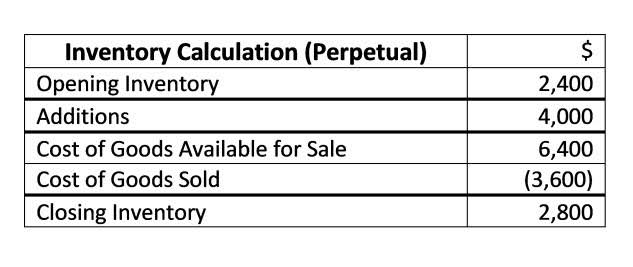
As your business acquires new assets (e.g., machinery, office equipment, vehicles), you record the initial purchase value in your Fixed Asset account. But these items don’t retain that initial value; if liquidated, they would likely be sold at a loss. In order to record this ongoing value drop, you would use a corresponding contra account — an Asset Depreciation account. Consider a business contra revenue account that offers an early payment discount to its customers, cutting their invoiced total by 3% if they pay within 1 week of invoicing. If every single buyer had taken advantage of the early payment discount, the company would have provided roughly $10 thousand in discounts during that same timeframe. In reality, the actual number of company discounts came closer to $5 thousand.
Sales Returns Account

Embrace contra revenue as a tool for transparency and analysis, and leverage its insights to guide your business towards sustainable growth and success. Contra liability, equity, and revenue accounts have natural debit balances. These three types of contra accounts are used to reduce liabilities, equity, and revenue which all have natural credit balances. Therefore, for these three, the debit balance actually represents a negative amount. A contra revenue represents any deductions or offsets that need to be removed from gross revenue to provide a clearer understanding of actual income — such as in the example just provided. These accounts will typically help track sales discounts, product returns, and allowances (e.g., a price reduction for a good with minor defects).
Expenses Vs. Costs
- In the above example, the debit to the contra liability account of $100 lets the company recognize that the bond was sold at a discount.
- A contra liability is a general ledger account with a debit balance that reduces the normal credit balance of a standard liability account to present the net value on a balance sheet.
- The company would see the original amount, discounted sale, and net sales in the contra revenue account.
- This guide is also related to our articles on understanding gross vs. net profit, understanding prepaid expenses, and understanding unearned revenue.
- The contra revenue account reflects the original amount, the discounted sale, and the resulting net sales for the company.
Typically, these notes reflect purchases made on credit by your customers. To obtain a cash payout before the note reaches maturity, you can sell these notes to a bank or other financial institution for some price below the note’s face value. For instance, if a company has a plant asset such as Equipment with a debit balance of $92,000 and the account Accumulated Depreciation has a credit balance of $50,000, the carrying amount (or book value) of the equipment is $42,000.

Sales Discounts
But sometimes, dissimilar transactions are important to consider together within a ledger. Contra Equity Account – A contra equity account has a debit balance and decreases a standard equity account. Treasure stock is a good example as it carries a debit balance and decreases the overall stockholders’ equity. Contra revenue affects the income statement by reducing gross sales, ultimately influencing the net sales figure. This, in turn, can impact profitability and provide a better picture of a business’s financial health. Contra accounts are used to reduce the value of the original account directly to keep financial accounting records clean.

Understanding a Contra Account
The difference between an asset’s account balance and the contra account balance is known as the book value. Look at contra revenue management as a key part of your broader financial strategy. Focusing on these areas can help your business not only survive, but thrive, in today’s competitive market.

The amount is reported on the balance sheet in the asset section immediately below accounts receivable. Make sure you track each type of contra revenue carefully to maintain precise records that can then inform your business decisions and help you spot trends or issues in sales processes, product quality, or pricing strategies. The sales returns account contains either an allowance for returned goods, or the actual amount of revenue deduction attributable to returned goods. It is especially important to track sales returns separately and on a trend line, since this can provide important evidence of problems with a company’s products that are causing customers to return goods. It is important to realize that unearned revenue is not a contra revenues account. The balance is held as a current liability (credit) on the balance sheet of the business.
To determine the contra revenue, you simply deduct the gross sales from the net sales. Discount on Notes Receivable is a contra asset account with a credit balance that reduces the normal debit balance of its parent Notes Receivable asset account in order to present the net value of receivables on a company’s balance sheet. The sales discounts contra revenue account records the discounts given to customers on sales made to them, normally a cash or settlement discount. The account is normally a debit balance and in use is offset against the revenue account which is normally a credit balance. Consequently the net balance of the two accounts shows the net value of the sales after discounts.
The Contra Revenue Account
Contra equity is a general ledger account with a debit balance that reduces the normal credit balance of a standard equity account to present the net value of equity in a company’s financial statements. Examples of equity contra accounts are Owner Draws and Repurchased Treasury Stock Shares. In addition to sales returns, the most common contra revenues are sales discounts and sales allowances. A “discount,” in accounting terms, usually refers to a price reduction offered as an inducement to customers who pay their bills quickly, not to a “sale” price, which is simply incorporated into gross revenue. Sales allowances are price reductions offered to persuade customers to accept merchandise with damage or minor defects not serious enough to warrant a return. To illustrate the contra revenue account Sales Returns and Allowances, let’s assume that Company K sells $100,000 of merchandise on credit.
- The use of a contra account allows a company to report the original amount and also report a reduction so that the net amount will also be reported.
- For the purpose of financial statement reporting, the amount on a contra account is subtracted from its parent account gross balance to present the net balance.
- Those who are struggling with recording contra accounts may benefit from utilizing some of the best accounting software currently available.
- When considering all of the money currently owed to your business that’s recorded in your Accounts Receivable (A/R) line item as an existing asset, there’s a good chance that not all of those customers are going to pay you back in full.
- For instance, if a company has a plant asset such as Equipment with a debit balance of $92,000 and the account Accumulated Depreciation has a credit balance of $50,000, the carrying amount (or book value) of the equipment is $42,000.
- But sometimes, dissimilar transactions are important to consider together within a ledger.
- Maybe more importantly, it shows investors and creditors what percentage of receivables the company is writing off.
- Contra equity accounts carry a debit balance and reduce equity accounts.
- Contra assets decrease the balance of a fixed or capital asset, carrying a credit balance.
In accounting, contra refers to accounts or transactions that are opposite or contrary to another account. It is a term used to describe specific types of accounts that offset the balance of related accounts, providing a clearer view of financial transactions within an organization. It’s normal for businesses to receive refund requests or returns from customers.
- Look at contra revenue management as a key part of your broader financial strategy.
- Similarly, if the parent account lists entries as debits, the contra account will appear as a credit.
- Now, if that sounded like a lot of mumbo-jumbo jargon to you, don’t worry.
- If the bond is sold at a discount, the company will record the cash received from the bond sale as “cash”, and will offset the discount in the contra liability account.
- Initially, the Sales account shows a credit balance when goods are sold.
- Another common contra liability account is a Discount on Bonds Payable account used by businesses that issue their own bonds.
- It will debit Accounts Receivable for $100,000 and will credit Sales for $100,000.

Add Comment